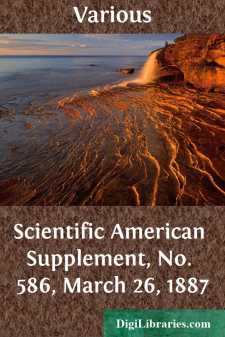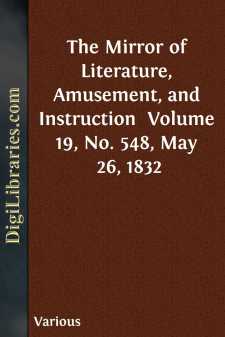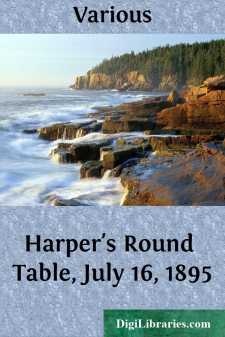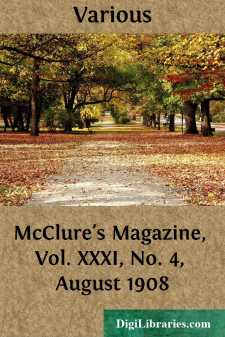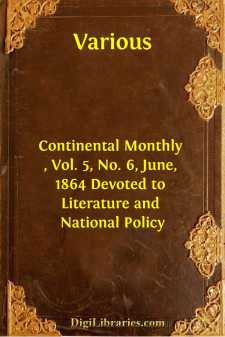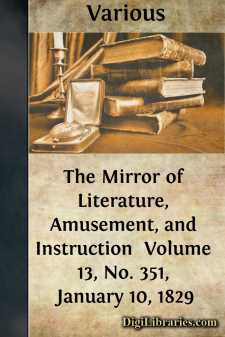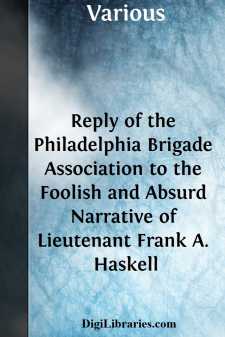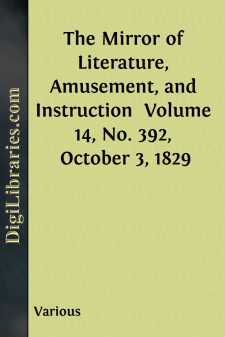Categories
- Antiques & Collectibles 13
- Architecture 36
- Art 48
- Bibles 22
- Biography & Autobiography 813
- Body, Mind & Spirit 142
- Business & Economics 28
- Children's Books 17
- Children's Fiction 14
- Computers 4
- Cooking 94
- Crafts & Hobbies 4
- Drama 346
- Education 46
- Family & Relationships 57
- Fiction 11829
- Games 19
- Gardening 17
- Health & Fitness 34
- History 1377
- House & Home 1
- Humor 147
- Juvenile Fiction 1873
- Juvenile Nonfiction 202
- Language Arts & Disciplines 88
- Law 16
- Literary Collections 686
- Literary Criticism 179
- Mathematics 13
- Medical 41
- Music 40
- Nature 179
- Non-Classifiable 1768
- Performing Arts 7
- Periodicals 1453
- Philosophy 64
- Photography 2
- Poetry 896
- Political Science 203
- Psychology 42
- Reference 154
- Religion 513
- Science 126
- Self-Help 84
- Social Science 81
- Sports & Recreation 34
- Study Aids 3
- Technology & Engineering 59
- Transportation 23
- Travel 463
- True Crime 29
Sort by:
by:
Various
American Missionary Association. FREE ONCE MORE. At the close of our fiscal year in 1887, we were enabled to utter the joyful word "Free," no debt darkening our balance sheet. Last year (1888) we were compelled to moderate our tone and say "Not quite free," for a balance of $5,641.21 stood on the wrong side of our ledger. But now, in the good providence of God, we can say "Free once...
more...
by:
Various
THE RETIRO VIADUCT. We give engravings of the viaduct over the river Retiro, Brazil, our illustrations being reproduced by permission from the Proceedings of the Institution of Civil Engineers. In a "selected paper" contributed to the volume of these proceedings just published, Mr. Jorge Rademaker Grunewald, Memb. Inst. C.E., describes the work as follows: VIADUCT OVER THE RETIRO, BRAZIL....
more...
by:
Various
STAINES NEW BRIDGE. This handsome structure has lately been completed, and was opened on Easter Monday last, April 24, by their Majesties and the Court passing over with suitable ceremony. This was a gala day for Staines and its vicinity; for, independently of the enthusiasm awakened by the visit of the popular Sovereign, the completion of so useful and ornamental a fabric must have been an occasion of...
more...
by:
Various
A STORY OF THE REVOLUTIONARY WAR FOUNDED ON FACT. The chips flew merrily under Jack Lockett's axe to the tune of his whistling, for he was chopping the night's supply of firewood, and the dark was shutting down apace on the cold January day. He had already made the horse and the cows snug in the barn, and his young appetite was sharp set for the supper which would be ready with the finish of...
more...
by:
Various
Once in a generation the intimate and vital secrets of a great nation may be made public through one of the little circle of men to whom they are entrusted; but rarely, if ever, till the men are dead, and the times are entirely changed. Beginning next month, McClure’s Magazine will present to the reading world a striking exception to this rule. It will print for the first time a frank and startling...
more...
by:
Various
Public Buildings of Manchester PUBLIC BUILDINGS OF MANCHESTER. The annexed Engravings are important illustrations of the statement in a recent Edinburgh Review:—that Lancashire from being amongst the most backward parts of England, has worked its way into the front rank. They are, however, not only characteristic of the public spirit which animates the whole county; but they are monuments of...
more...
by:
Various
ERNEST RENAN'S THEORY. Christianity is a fact. We sometimes hear of men who are said to 'deny' 'Christianity.' The expression is nonsense. Men cannot deny the sun. Christianity has been a visible thing, on this planet, for eighteen hundred years. It has done a heavy amount of work, which is very visible too. It is altogether too late in the day to 'deny Christianity.'...
more...
by:
Various
MACCLESFIELD BRIDGE. This picturesque structure crosses the Canal towards the Northern verge of the Regent's Park; and nearly opposite to it is a road leading to Primrose Hill, as celebrated in the annals of Cockayne as was the Palatino among the ancient Romans. The bridge was built from the designs of Mr. Morgan, and its construction is considered to be "appropriate and architectural."...
more...
by:
Various
At the stated meeting of the Survivors of the Philadelphia Brigade, Second Brigade, Second Division, Second Corps, Army of the Potomac, held at the above place, Tuesday evening, September 7, 1909, letters were read from Gen. Alexander S. Webb, who commanded the Philadelphia Brigade at the Battle of Gettysburg, July 1, 2 and 3, 1863, requesting the consideration of the Brigade Association to the most...
more...
by:
Various
The Duke's Theatre, Dorset Gardens. The above theatre was erected in the year 1671, about a century after the regular establishment of theatres in England. It rose in what may be called the brazen age of the Drama, when the prosecutions of the Puritans had just ceased, and legitimacy and licentiousness danced into the theatre hand in hand. At the Restoration, the few players who had not fallen in...
more...



